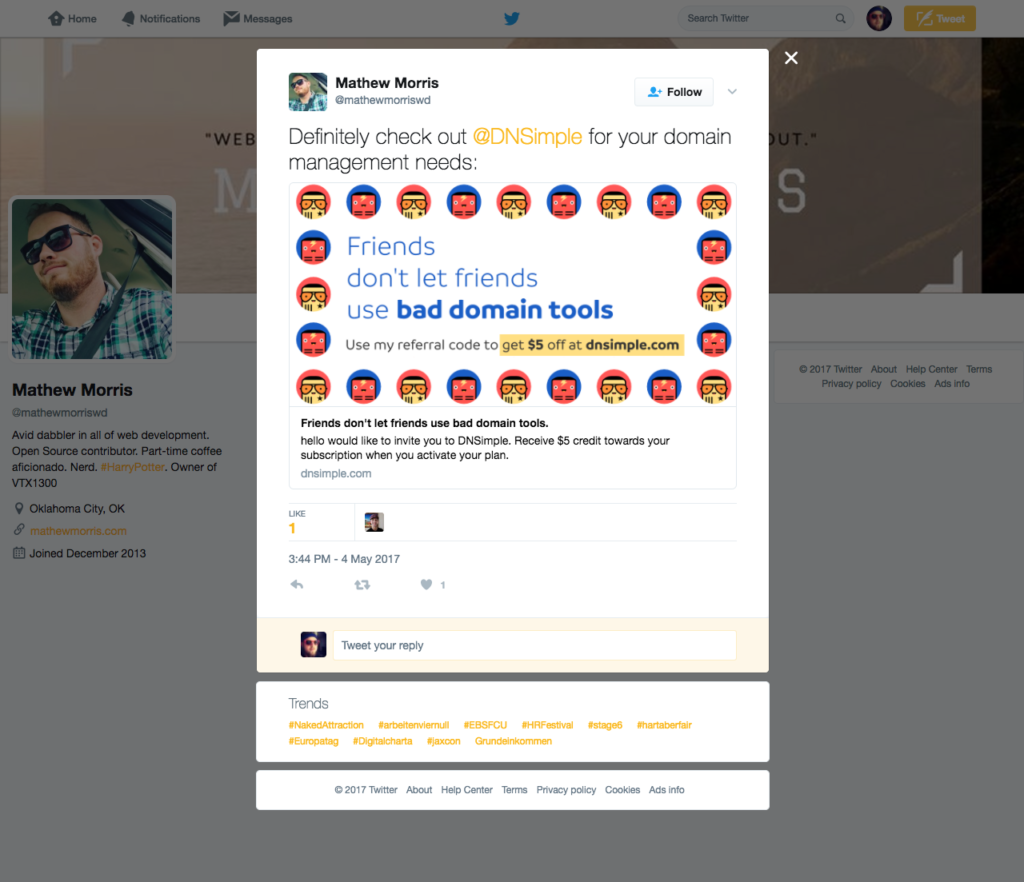A study by Texas Tech University found that “83% of satisfied customers are willing to refer a product or service but only 29% actually do.”
With the power that referral programs wield as a customer-acquisition channel, it seems companies are missing out on a major opportunity.
Instead of customer advocates driving acquisition, a lack of customer engagement with your referral program means that you are spending more time and money trying to find and convert new customers from increasingly expensive, complex, and low-quality sources.
This raises a question: “If customers are satisfied and willing to share, why aren’t they?”
To find out why, we have to start by looking at how to design referral programs to encourage sharing and keep them top of mind.
Program design stops customer advocates from sharing
The benefits of referral programs are pretty well-documented, but often the programs are designed to be too generic. They follow the “give this, get that” formula but don’t offer any meaningful value or encourage customer advocates to act.
This approach to referral program design fails for two reasons:
- The offer isn’t in line with what advocates need or want.
- You don’t talk about your referral program enough; it’s there in the background but not really doing anything.

[Source]
The key is to figure out what you want to accomplish. Do you want to boost acquisition by 20%? Get more people to buy a particular product? Get people to spend 30% more on average? Lower CAC? Questions like these form the basis of your goal. It’s the one thing you want to accomplish in the short-term.
Let’s say you want to boost product sales in the next three to six months. Your program should be designed in a way that relates to the goal. For example, if you send your referral via email marketing, include a visual product list at the bottom, with CTA buttons that take readers to the “Shop” page. Combine this with an attractive discount offer and advocates are more likely to respond to it by sharing.
Now let’s look at how design influences the offer and how you get it in front of people.
Advocate preferences and your goals influence design
It’s no surprise that people tend to gravitate toward those with whom they have a lot in common. They share interests, experiences, and sometimes even physical traits. For that reason, we can assume that your advocates are very similar to the people they’ll refer. And since you know your advocates so well, they’re a good place to start when developing a referral strategy and program.
If you go back to the idea of setting goals for a minute, you can start to design your referral program by asking yourself a few questions.
Let’s say your goal is to increase sales for specific products and services. Here are some questions to ask yourself:
- Which products or services do advocates buy the most?
- Which products or service are similar and need a sales boost?
- What offers get the most advocates to act?
Start to build your referral program around the answers. This way, you can be sure that the program is in line with what advocates – and, by extension, their referral customers – want.
Imagine as an example an SaaS business that offers a three-tiered product – starter, standard, and premium. The goal is to sell more of the premium package, because data shows that these customers are less likely to churn.
The referral program can then
- offer referred customers a discount when they sign up for the premium package;
- offer advocates discounted access to the premium package if they don’t already have it; and
- offer advocates who already have the package unlocked access to bonus features they’d normally have to pay for.
Experiment with the reward amount to find what gets the best response. Keep in mind that the reward doesn’t have to be the same for advocates and referred customers even though a balanced reward is great starting point. For example, advocates can get a higher percentage or dollar amount off. Our recommendation is to run an offer test to optimize reward structure, and our platform has unique capabilities around offer testing.

Referral Marketing – The Best Practices You Need to Know
Written by veteran referral marketers, this guide will help you optimize your referral marketing program and supercharge growth.
Get the GuideKeep the momentum going with regular reminders
You’re constantly competing for your advocates’ attention. Between the content they consume, the ads they see, and the time they spend using other apps, their attention is stretched pretty thin.
That’s why you have to find creative ways to keep your referral program top of mind. It isn’t enough to send the occasional email or post a few updates on social media.
The more channels you use to get your advocates’ attention, the better your chances of getting in front of more advocates, increasing the likelihood that they’ll refer their friends and family often.
Use a combination of channels that make referring easy to keep the referral value top of mind. Examples of channels you can use together include:
- Email marketing
- Social media contests
- In-app or other notifications
Your omnichannel approach can include an initial email to advocates that includes things like a reference to products they’ve bought in the past, links to popular products, or even suggested products, based on their purchase history. Next, post updates on Twitter and Facebook that run at the same time so that more advocates see the offer.

[Source]: Take a promo like this one and run it on Facebook and Twitter at the same time.
If you have an app, send another reminder, but this time tally up how many referrals have been sent to date. This motivates advocates to keep sharing to boost their numbers.
To figure out what combination of channels will work best for advocates, think about where your advocates spend the most time online.
For example, if they spend a lot of time searching the web, buy ads that appear on the sites they spend time on. If advocates spend a lot of time on social media, run promos once a month.
Get creative and tailor the referral message based on where it appears. For example, for advocates who spend time on social media, run ads that say something like, “You spend so much time Facebook, so why not make some money while you’re scrolling?”
This way you speak to the activity the advocates are engaging in and give them an incentive to take the added step of referring someone.
Make your program your own
And there you have it. Get more customer advocates to share your referral program by coming up with a strategy that helps you get clear on your goals for the program, incorporate those goals into the program’s design, and then promote the program so that it stays top of mind.
There’s no right or wrong type of referral, so get to know your customer advocates and cater to their needs by using these steps. You’ll see a shift, with much more than 29% of advocates sharing.



